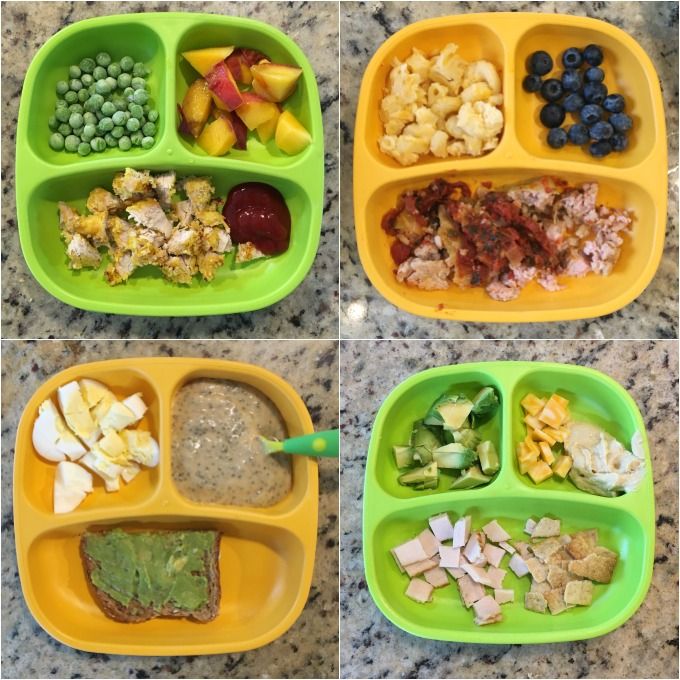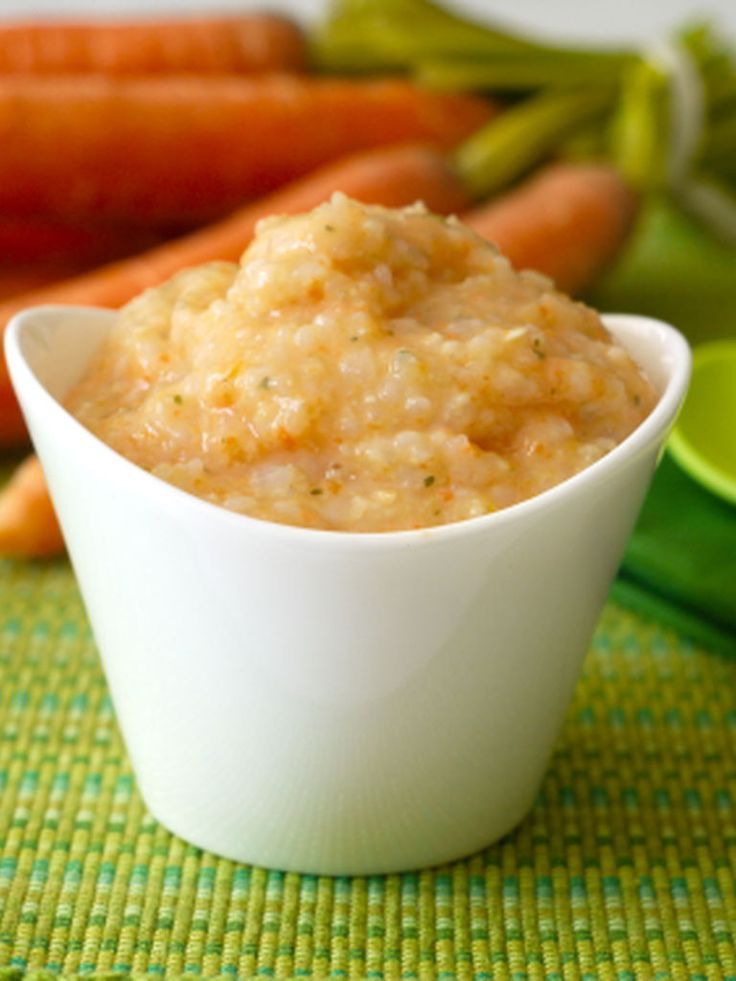Foods to stop baby constipation
Are There Baby Foods that Help with Constipation?
While parenting brings many surprises, one of them is likely how much you’ll think about poop, or lack thereof, especially during that first year. But here you are worrying about your baby’s digestive tract and convinced that they’re constipated.
If you’ve recently introduced your baby to solid food, then your worries may be on target: solid foods can put a strain on your baby’s developing digestive tract and cause constipation. But there are things you can do to help!
Before you begin treating constipation you should determine if there is really an issue at all. So here’s the scoop on poop and how to tell if your worries are founded and your baby is constipated.
Breastfed babies
During the first few weeks, you’ll find yourself changing diapers with alarming regularity. Figure in every feed or so.
But don’t despair, because by the time your baby reaches 6 weeks old, they may have a bowel movement only once or twice a day. On the other hand, they may have one only every 7–10 days. (Yep, the frequency really can vary that much.)
The poop is yellow, soft, runny and sometimes lumpy and the smell isn’t unpleasant.
Formula-fed babies
A newborn, formula-fed baby typically poops up to five times a day. At about 6 to 8 weeks, this may decrease to around once a day.
Formula-fed babies have poop that is a camel to brown color with a thicker consistency, more like paste. Most likely, the less-than-aromatic smell means you’ll hermetically seal soiled diapers before you toss them into the garbage.
Signs that your baby is constipated
You’ve noticed that your baby’s tummy isn’t following the schedule that you got used to. Could it be constipation? Here are the signs that could confirm your suspicions:
- You notice that they cry or fuss while they’re trying to have a hard bowel movement.
- The poop, when it does come, is like hard pellets.
- You notice streaks of red blood in the hard poop.

While it’s not easy for a baby on a liquid diet to become constipated, trouble can start when you start introducing your baby to solid foods at around 6 months. Here’s why:
New food types
Think of it as a learning curve: Your baby’s body is learning how to cope with a new kind of food to digest as they move away from their full liquid diet and you need to soften the learning curve. (Pardon the irresistible pun.)
Changes to fluid intake
Decreased fluids will make your baby’s poop harder and more difficult to push out. If they’ve started solids, they may need to up their fluid intake to offset the solid food. And if your baby is teething or feeling unwell, it can also lead to them taking in less fluid than usual.
Lack of fiber
Even though they’re just starting out, babies’ tummies work like ours. While initially the move to solids that have fiber (from breast milk or formula, which don’t) can cause temporary constipation, their tummies will adjust.
Make sure to monitor your baby’s fiber intake and pair it with plenty of hydration for a smooth ride the same way that you monitor yours.
OK, so you’ve confirmed that your baby is constipated. The next step is helping to alleviate the strain on their developing digestive system.
Remember that you can keep offering these foods as your baby develops into a toddler and beyond. In fact, there is little research or evidence to support specific foods (including high fiber ones) in treating or preventing constipation in infants. Most of these recommendations are based on evidence for older adults and children.
Keep in mind that good practice when introducing solids is to introduce foods as single ingredients. That way, if your baby is allergic to certain foods, you’ll be able to more easily trace the source.
If your little one hasn’t tried these foods before, don’t rush the process. Test out one at a time and then introduce combinations once you’re confident they’re well tolerated.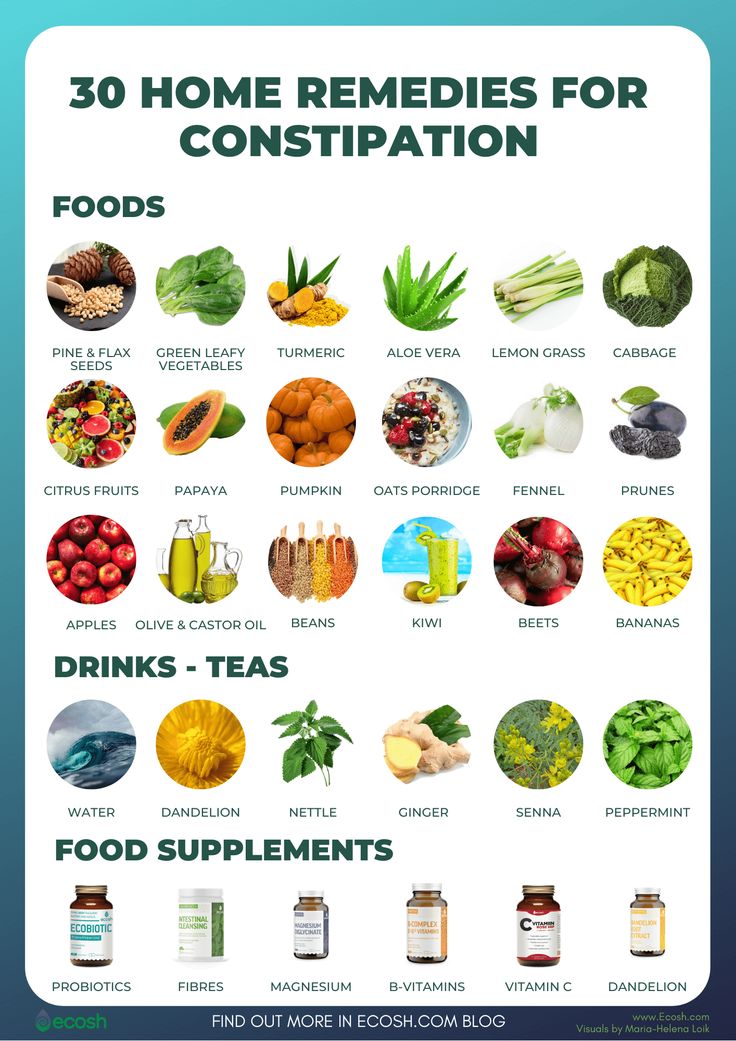
- Back to basics. Give your baby’s digestive tract a break by feeding them mashed avocado or sweet potato purée. These are easy to digest and may give your baby the kick start they need.
- B vegetables. Think broccoli, Brussels sprouts, and beans. Purée these for a meal filled with fiber.
- P fruits. Your grandmother was right — bring on the prunes for quick work. A purée that includes a mix of prunes plus pears, plums, or peaches should work magic. Try subbing the prunes with dates for a change.
- Bring on the fiber. If your baby is over 8 months, you can offer them whole grains like oatmeal, fiber-rich cereals, whole wheat pasta, and brown rice.
- Water intake. Until 6 months an exclusively breastfed or formula-fed baby doesn’t need to drink water. Above this age, you can introduce small amounts of water.
Plums and pears with cinnamon
Cut 2 or 3 pears and plums into small pieces. Place in a saucepan with a small amount of water and simmer until soft. Add in a sprinkle of cinnamon. Blend thoroughly.
Place in a saucepan with a small amount of water and simmer until soft. Add in a sprinkle of cinnamon. Blend thoroughly.
Sweet potato with apple and peach
Cut half a sweet potato, one apple, and half a peach into small pieces. Place in steamer basket and cook until tender. Blend until smooth.
Spinach and apple purée
Chop two apples into small chunks and cook in saucepan with about 1/2 cup of water. When they’re tender, add about 1 cup of spinach and cook another 2 to 3 minutes. Purée until smooth. Can be seasoned with cinnamon and ginger.
Some sources suggest prune, pear, and apple juices help to increase the water content in poop and can ease constipation.
However, the American Academy of Pediatrics recommends steering clear of fruit juice for children younger than 1 year old. You can stick with these fruits as purées for similar effects.
What is it about prune juice? The high levels of sorbitol and phenolic substances in prune juice and dried plums act as a laxative and diuretic properties. So if your child is over 1 year old, you can use small amounts of prune juice to encourage their system to run.
So if your child is over 1 year old, you can use small amounts of prune juice to encourage their system to run.
Some studies show that constipation may affect as much as 30 percent of children. If your child is part of the unlucky statistic, here are some foods that you may want to give them smaller amounts of until it passes:
- bananas
- dairy products such as cheese and yogurt
- low fiber foods like white rice, white bread, and white pasta
If you’re like most parents, you’ll be up for whatever you can try to help your baby get comfortable fast. Here are a few tricks that you can use to ease your baby’s constipation:
- Warm baths. These can relax those abdominal muscles and get them working.
- Exercise. Lay your baby on their back and push their legs alternately as if they’re cycling a bike. Alternatively, hold their knees and feet together and push their feet towards their belly.
- Massage.
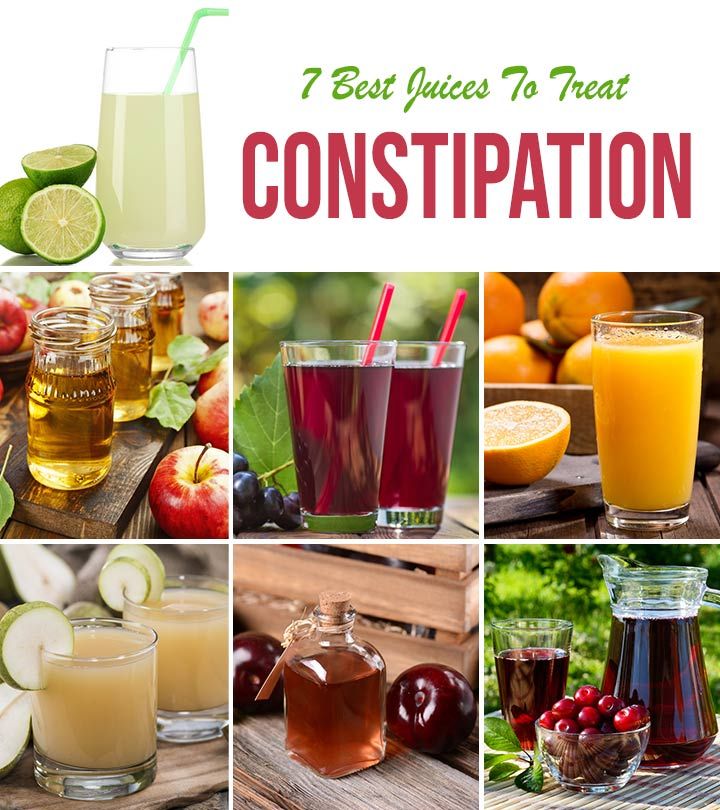 Use your fingertip to draw clockwise circles on your baby’s stomach.
Use your fingertip to draw clockwise circles on your baby’s stomach.
If you see that despite your home remedies, your baby still is having hard stools or hasn’t pooped after 2 or 3 days from their last hard stool, then contact your pediatrician. Especially if you consistently notice blood in their poop or your baby is extremely irritable and appears to be in pain.
While dealing with your baby’s toilet issues may seem a tad unsavory, you’ll soon be so used to it, that you’ll find yourself sharing your insights over coffee with other parents. And don’t be shy about sharing the yummy food combinations you discover to keep things moving.
The Best Foods to Help Baby Poop (And a Few That Make It Worse)
Relieving your constipated baby can be as simple as feeding her the right thing. Load up on these foods to help baby poop (and avoid ones that worsen the problem).
1 / 11
SMarina/Shutterstock
Relieves Constipation: Prunes
No surprises here; prunes are one of the best high-fiber foods for a baby who’s having tummy troubles.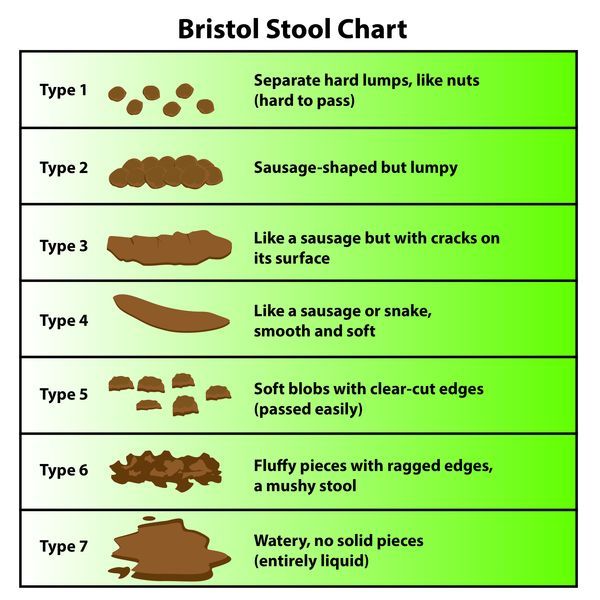 If your little one is just starting solid foods, try cooking and mashing some prunes to feed her. You could also chop cooked prunes into small, bite-sized pieces—or use one of our other creative techniques for introducing new baby foods.
If your little one is just starting solid foods, try cooking and mashing some prunes to feed her. You could also chop cooked prunes into small, bite-sized pieces—or use one of our other creative techniques for introducing new baby foods.
2 / 11
margouillat photo/Shutterstock
Relieves Constipation: Sweet potatoes
Sweet potatoes are delicious just about any way you prepare them, and they are also magic for a baby who needs to poop. They’re high in insoluble fiber, which will help your baby go right away. Try making your own baby food by cooking and mashing a sweet potato or roast fries in the oven for fun finger food.
This is how you know when to start feeding babies solid foods.
3 / 11
Mia Stern/Shutterstock
Relieves Constipation: Apples
An apple a day can keep constipation away! Apples (especially with the skin on) are high in fiber and can help pull water into your baby’s colon.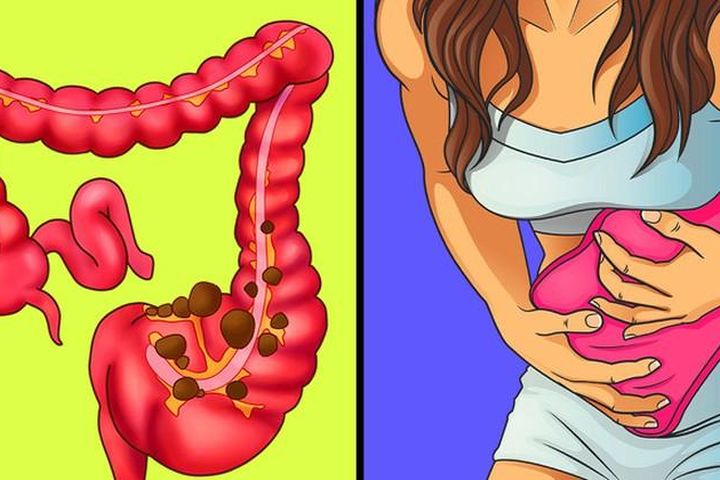 This keeps baby’s poop soft and easy to pass. Try offering small pieces of cooked apple or pour some apple juice into a sippy cup to help get things back on track. Apples are a great stage 1 baby food. Learn more about what types of food to start feeding baby once they’re ready to go beyond formula or breastmilk.
This keeps baby’s poop soft and easy to pass. Try offering small pieces of cooked apple or pour some apple juice into a sippy cup to help get things back on track. Apples are a great stage 1 baby food. Learn more about what types of food to start feeding baby once they’re ready to go beyond formula or breastmilk.
4 / 11
mama_mia/Shutterstock
Relieves Constipation: Broccoli
If your baby hasn’t tried broccoli yet, there’s no time like the present! Broccoli is a vitamin powerhouse and is high in fiber. Try blending up cooked broccoli in a food processor or offering small, bite-sized pieces of soft, cooked broccoli. (Consider one of our recommended baby food makers.) If your baby is eating a variety of foods, try adding small pieces of broccoli to brown rice or scrambled eggs.
When he’s a little older, your kid will love these tasty broccoli side dishes.
5 / 11
nelea33/Shutterstock
Relieves Constipation: Pears
There is nothing more delicious than a ripe, juicy pear. Treat your baby to this seasonal treat to help relieve and even prevent constipation. Pears are one of the first foods babies can try and are high in fiber. They can be cooked, but are soft enough to be offered raw. Your baby can safely gum small pieces of ripe pear without teeth.
Treat your baby to this seasonal treat to help relieve and even prevent constipation. Pears are one of the first foods babies can try and are high in fiber. They can be cooked, but are soft enough to be offered raw. Your baby can safely gum small pieces of ripe pear without teeth.
6 / 11
Sea Wave/Shutterstock
Relieves Constipation: Peas
If your baby is just starting solid foods, peas are usually one of the first options. This is good news if your baby needs help in the pooping department. Peas contain both soluble and insoluble fiber to help keep your baby’s poop soft and moving along. This makes it easier and quicker to pass without painful straining.
7 / 11
nesavinov/Shutterstock
Relieves Constipation: Spinach
We usually save the fresh spinach for our own salads, but babies should be invited to the greens party, too. Spinach is loaded with fiber and vitamins that help make your baby’s poop easier to pass. Try blending up some fresh spinach in a fruit smoothie for both of you!
Spinach is loaded with fiber and vitamins that help make your baby’s poop easier to pass. Try blending up some fresh spinach in a fruit smoothie for both of you!
8 / 11
Brent Hofacker/Shutterstock
Causes Constipation: Cheese
Dairy products like small cubes of cheese or lightly flavored yogurt are easy foods for babies learning to eat solids. While safe and convenient, cheese is a low-fiber snack and can lead to constipation. Try cutting back on the dairy products for a few days and see if your baby improves.
You may think these foods are dairy-free, but they’re not!
9 / 11
Paulo Vilela/Shutterstock
Causes Constipation: Bananas
Bananas are a great first finger food for babies (and a yummy way to cut calories when baking). Unfortunately, they can also slow down your baby’s digestion, and thus slow down their pooping. Take a brief break from bananas and use this opportunity to give some new fruits a try.
Take a brief break from bananas and use this opportunity to give some new fruits a try.
10 / 11
images72/Shutterstock
Causes Constipation: Cereal
Whether your child is just starting out with rice cereal or has graduated to carrying a bag of Cheerios with her wherever she goes, babies and toddlers cannot get enough of this favorite first food. Cereal can lead to more formed poop, which could slow down the number of poopy diapers each day. Try cutting back on the amount of cereal and incorporating more fresh fruits and veggies.
Use up those Cheerios in one of these genius recipes.
11 / 11
Igor Dutina/Shutterstock
Causes Constipation: Processed foods
Processed foods like cookies, crackers and white bread are common snacks for growing babies and toddlers, but too much can quickly lead to constipation.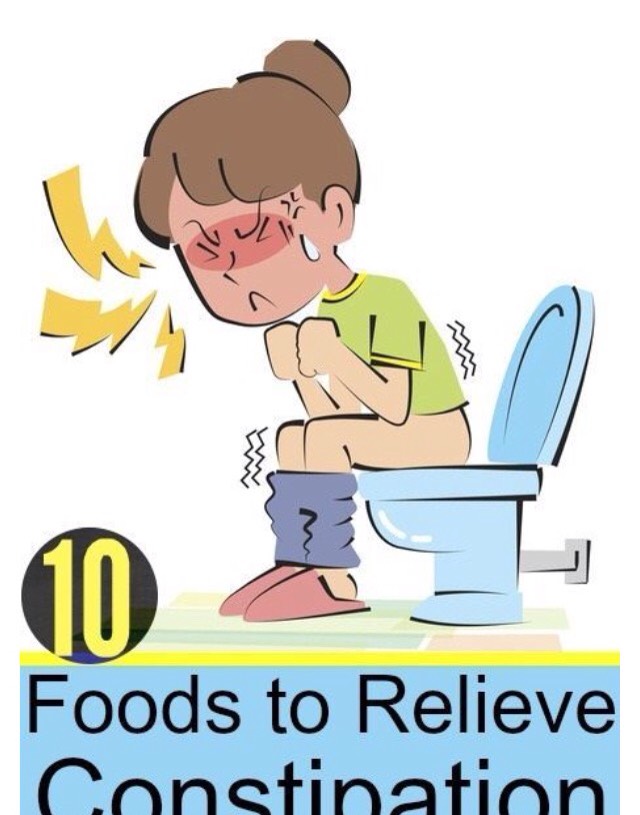 While you don’t have to cut these foods out entirely, try to limit them if your baby is having tummy troubles. Or, try swapping out white flour for whole wheat. For example, brown rice is a tasty alternative to low-fiber white rice.
While you don’t have to cut these foods out entirely, try to limit them if your baby is having tummy troubles. Or, try swapping out white flour for whole wheat. For example, brown rice is a tasty alternative to low-fiber white rice.
Originally Published: May 20, 2019
Carrie Madormo, RN
Now a freelance health and food writer, Carrie worked as a nurse for over a decade. When she isn't hunched over her laptop with a baby in hand, you will find her cooking her grandmother’s recipes, lacing up her running shoes or sipping coffee in the bathroom to hide from her three young children.
How to deal with constipation in a child?
08/15/17
Manual for parents on a problem that is very common in children with autism
Source: Autism Speaks
to symptoms of chronic constipation includes:
- Very very hard and dense stool.
- Pain and difficulty in emptying the bowels.
- The child has a bowel movement three times a week or less.
Talk to your child's doctor to find out if your child is constipated.
What causes constipation in children with autism?
1. Holding a stool
Some children try to hold a stool and ignore the urge to have a bowel movement. This can happen for various reasons, for example:
- Fear of the toilet.
- Reluctance to use the toilet outside the home.
- Unwillingness to interrupt the game.
- Fear of pain during bowel movements.
2. Toilet training
Children may resist and hold stool when toilet training is attempted. This can become a habit that is difficult to break later on.
3. Nutrition problems
- Lack of fiber found in fruits, vegetables and whole grains.
- Dairy products, if the child is allergic to cow's milk or consumes too much dairy products.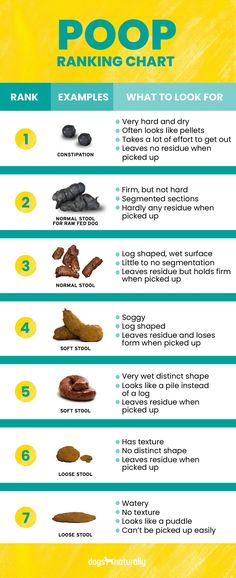
- Insufficient intake of water and other beverages, especially when ill.
- Changes in appetite or diet due to illness of the child.
4. Stress and changes in daily routine.
Travel, weather changes, and stress can affect bowel function.
5. Medications
Some medications, such as antacids, antidepressants, and some attention-deficit/hyperactivity disorder medications, can cause stools that are too hard.
6. Associated medical problems.
Constipation is common in children who have movement problems, including decreased muscle tone and cerebral palsy. Also, constipation is possible in case of hypersensitivity to gluten or casein.
Acute constipation and encopresis
Acute constipation
Some (but not all) children with chronic constipation may have this problem. Acute constipation can be caused by too much hard stool in the colon. As a result, the child cannot have a bowel movement for several days. Acute constipation is diagnosed by a doctor by palpation of the abdomen or by X-ray. Acute constipation is often accompanied by loss of appetite and lethargy. After a bowel movement, the child feels better and the symptoms decrease.
As a result, the child cannot have a bowel movement for several days. Acute constipation is diagnosed by a doctor by palpation of the abdomen or by X-ray. Acute constipation is often accompanied by loss of appetite and lethargy. After a bowel movement, the child feels better and the symptoms decrease.
Encoprese
This problem occurs in some (but not all) constipated children. Encopresis means that during constipation, the child has loose stools. This is a common problem.
Encopresis can develop if a child holds a stool for so long that it becomes difficult for him to have a bowel movement. The stool becomes larger and drier. Due to the retention of large stools, the intestinal muscles get tired and relax. After the muscles relax, loose stools can seep into the underwear.
The child does not feel that this is happening and cannot control loose stools. This usually happens several times a day, causing the underwear to become dirty. Sometimes encopresis is confused with diarrhea, but the child does not actually have diarrhea because most of the stool in the intestines remains solid.
Many children with encopresis experience loss of appetite and decreased interest in daily activities. After a bowel movement, the child feels better and these symptoms decrease.
Treatment of constipation
There are three main approaches to the treatment of constipation.
Talk to your child's doctor about which type of treatment is best for you:
1. Dietary changes
- Increasing the amount of fiber in your diet will make bowel movements easier.
- Increasing fluid intake , especially water and juice, helps soften stools and reduces the chance of constipation.
2. Behavioral changes
- Regular exercise . Physical activity improves the functioning of the abdominal muscles, which facilitates bowel movements. Regular exercise, including walking, jumping rope, ball games, cycling and swimming, can help with constipation.
- Bowel training in the toilet . It is important that the child knows how to use the toilet at the first urge. The best way to teach this is through planned and extended "sit-downs" where the child is rewarded for simply sitting on the toilet for extended periods of time.
It is important that the child knows how to use the toilet at the first urge. The best way to teach this is through planned and extended "sit-downs" where the child is rewarded for simply sitting on the toilet for extended periods of time.
3. Medications
Children often need medication to have regular bowel movements. These can be:
- Preparations for daily use.
- Single-dose preparations that "cleanse" the intestines in case of severe difficulty with emptying.
Increasing fiber in the child's diet
A diet high in fiber promotes regular bowel movements and prevents constipation. Fiber is a substance that the body cannot digest. There are two types of fiber - soluble and insoluble. Soluble fiber promotes the entry of water into the intestines. Insoluble fiber facilitates the passage of stool through the intestines. Both types of fiber are needed to prevent constipation.
Fiber is an important part of a healthy diet. A lot of fiber is found in foods such as fruits, vegetables, whole grains, legumes, nuts, and seeds. They also contain a lot of protein, vitamins and minerals. A diet high in these foods is the best way to get enough fiber.
A lot of fiber is found in foods such as fruits, vegetables, whole grains, legumes, nuts, and seeds. They also contain a lot of protein, vitamins and minerals. A diet high in these foods is the best way to get enough fiber.
Where to find fiber
When shopping for food, you can check the nutritional information of the product, including the fiber level. Good choices are foods that contain at least 2 grams of fiber per serving.
When shopping, look for products that contain whole grains, whole grain flour, and oatmeal. Perhaps there are options for your child's favorite foods with whole grains, that is, higher fiber content. For example, whole-grain cheese crackers, whole-grain wheat flour bread, and high-fiber cereals may be suitable for you.
Recommended Fiber Values
— Ages 1 to 3: 19 grams per day (for boys and girls).
- Ages 4 to 8: 25 grams per day (for boys and girls).
- Ages 9 to 13: 31 grams per day for boys and 26 grams per day for girls.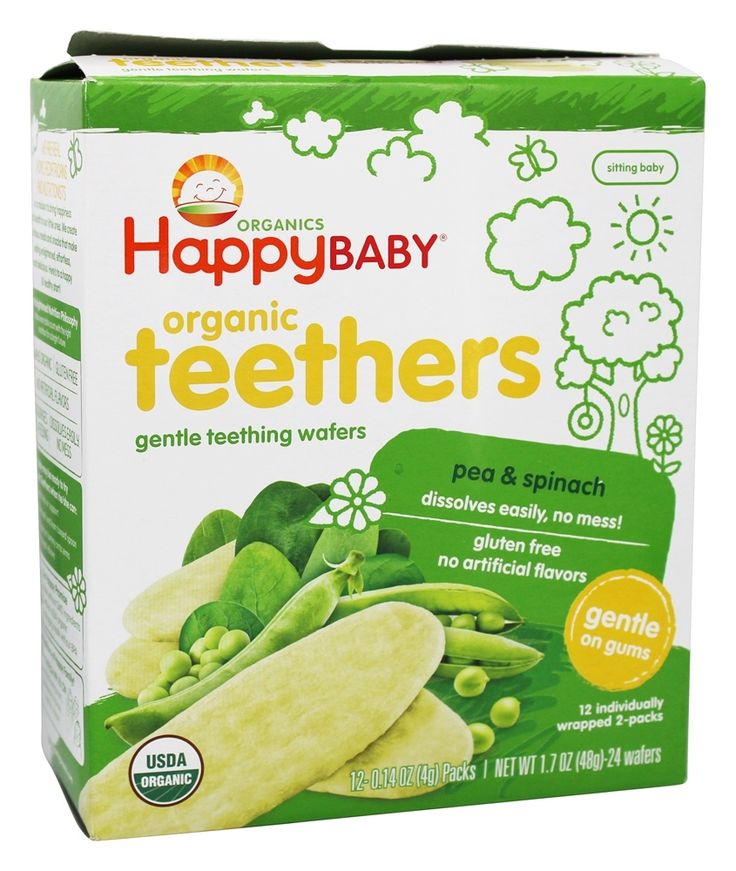
Examples of high fiber foods
- White beans: 9.5 grams per 1/2 cup.
- Oatmeal: 8.8 grams per 1/2 cup.
- Red beans: 8.2 grams per 1/2 cup.
- Beans: 7.5 grams per 1/2 cup.
- Pear (with skin): 4.3 grams per small pear.
- Raspberries: 4.0 grams per 1/2 cup.
- Baked potatoes (with skin): 3.8 grams per piece.
- Almonds: 3.3 grams per 30 grams.
- Apple (with skin): 3.3 grams per piece.
- Banana: 3.1 grams for one medium-sized piece.
- Orange: 3.1 grams per medium sized piece.
- Peanut butter: 3.0 grams per 2 tablespoons.
- Broccoli: 2.8 grams per 1/2 cup.
- Green peas: 2.5 grams per 1/2 cup.
- Avocado: 2.3 grams per 1/2 cup.
- Corn: 1.6 grams per 1/2 cup.
- Strawberries: 1.5 grams per 1/2 cup.
- Wild rice: 1.5 grams per 1/2 cup.
- Raisins: 1.4 grams per 1/2 cup.
- Popcorn: 1.2 grams per 1 cup.
Increasing fiber and fluid in the child's diet
It is advisable to offer children foods rich in fiber from an early age so that their use becomes a lifelong habit.
If your child is currently constipated, it is important to increase fiber levels very gradually over 2-3 weeks. Too much fiber in the diet can worsen constipation or cause gas, abdominal pain and diarrhea.
Increasing fiber will only be effective if the child also starts drinking more fluids. Make sure your child doesn't just start eating more fiber, but also starts drinking more water and juice.
How to Increase Fiber Without Child Resistance
Children with autism often resist change, especially dietary changes. Parents need to be patient and try different approaches, for example:
- Switch to crackers and whole grain pasta.
- Try whole grain bread and pizza. Many types of whole-grain bread do not differ in appearance from ordinary white bread.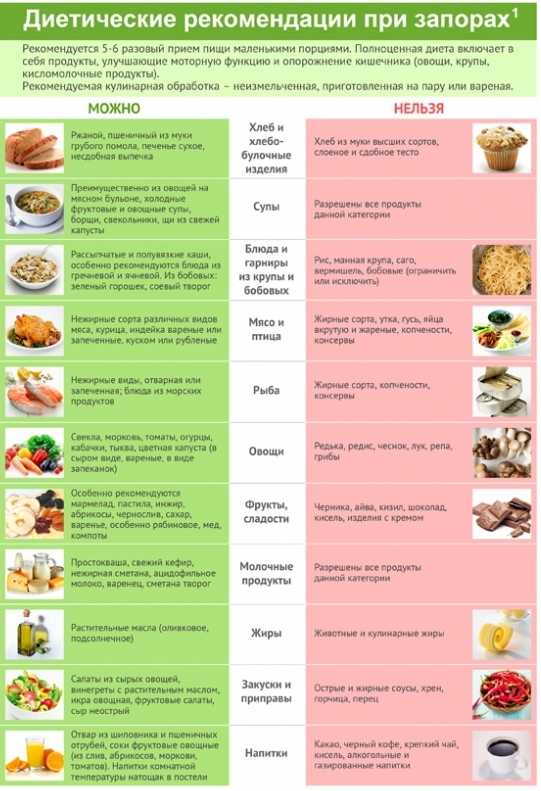
- Offer your child whole grain muesli or popcorn as a snack.
— Offer the child dried fruit as a sweet treat (prunes, dried apricots, raisins).
- Try to make cocktails from frozen fruits or berries based on juice or milk.
- Offer your child carrot, bell pepper, or celery sticks that can be dipped in peanut butter, hummus, or salad dressing.
— Add shredded vegetables or mashed vegetables to your child's favorite foods, such as pasta or pizza.
- Make funny faces or figures out of slices of fruits and vegetables.
- Invite the child to dip fruit slices in nut butter or his favorite kind of yogurt.
- Bake cookies, muffins or pies with whole wheat flour.
Increasing fluid intake
Sufficient water is essential to maintain a healthy body. It is found in both foods and drinks. As you increase the amount of fiber in your diet, you also need to increase your fluid intake.
How much fluid do you need?
- Follow your thirst. The amount of water a child needs varies depending on physical activity and what the child eats. Therefore, it is very important to monitor the signs of thirst in a child.
The amount of water a child needs varies depending on physical activity and what the child eats. Therefore, it is very important to monitor the signs of thirst in a child.
- When a child drinks enough water, his urine becomes clear, light yellow in color. Dark, tea-colored urine usually means your child needs to drink more.
Fluid types
1. Water: the best source of fluid.
2. 100% juice: good for health, but should be limited.
- 120-180 ml per day for children under 6 years old
- 240-360 ml per day for children over 6 years old
- Some juices (pear, apple, plum) contain sugars that act as a natural laxative and may help with constipation.
3. Milk:
- An important part of a child's nutrition.
— Excessive consumption of milk can lead to constipation.
- Desirable rate for milk: 480-720 ml per day (2-3 cups).
4. Sports drinks and drinks with electrolytes:
- They often have added sugar.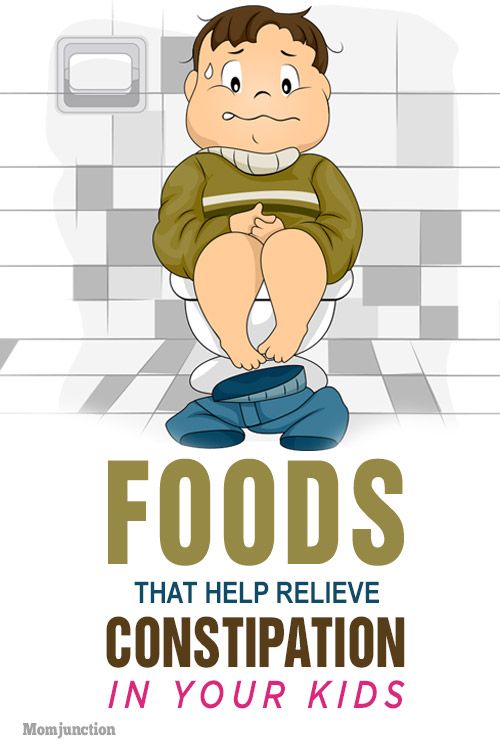
- Not the best choice for children.
- Check with your doctor before giving these drinks to your child.
5. Fruit drinks, soft drinks:
- They usually have added sugar.
- Not the best choice for children.
- It is better to save them for special occasions, such as holidays, you should not give them to the child regularly.
Fluids and constipation
It is very important to increase fluid intake at the same time as increasing fiber. Fluid helps soften stools and make bowel movements easier.
- Some juices (pear, apple, plum) are natural laxatives.
— It is advisable to give the child a lot to drink between meals, this contributes to regular bowel movements.
- Drinks with a lot of sugar, caffeine or "fortified with vitamins" can increase constipation.
Tips for increasing fluid intake
— Encourage your child to drink water between meals, on a full stomach the child may drink too little.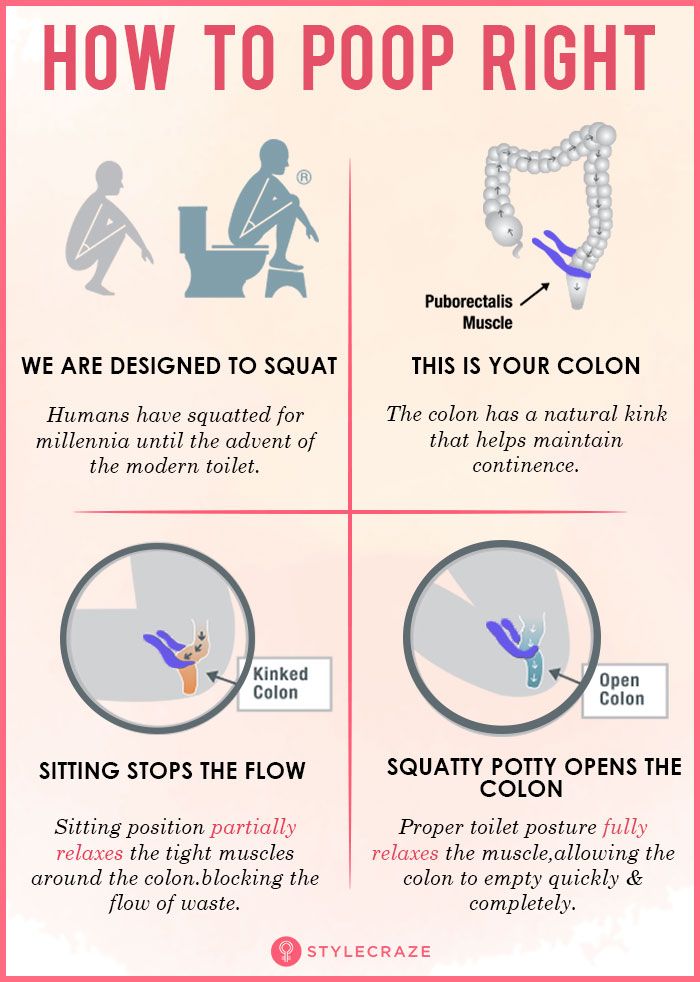
- Offer your child fruits with a high water content, such as grapes, oranges, or watermelon, as snacks and treats.
— Keep a bottle or cup of water handy so your child can always have a drink. Add some citrus juice to your water to make it taste better. Or try adding some other drink to the water.
- Lead by example. Children are more likely to drink water when they see their parents or siblings drinking water.
Toilet training
In case of constipation, it is very important to teach the child to use the toilet as soon as he feels the first urge. The easiest way to teach this is with a daily period of time when the child sits on the toilet for a long time. When a child gets used to sitting on the toilet for a long time, it will be easier for him to relax the muscles that hold the stool. With daily toilet seating time, your child will become less likely to hold a stool. When the child stops holding the stool, the intestines return to normal size and become more sensitive.
How to teach your child to sit on the toilet for a long time every day
1. Be patient with yourself and with your child. Learning a new skill, especially this skill, is never easy.
2. Start by teaching your child to sit on the toilet, even if he does not defecate:
- Start with 1-2 minutes. Very slowly increase the time to 10-12 minutes.
- Use a visual timer to let your child know how long to sit.
- Offer the child some quiet activity while he sits on the toilet. For example, reading a book, drawing, playing a handheld computer game, listening to music or audio books.
- Try to save the child's favorite pastime for sitting on the toilet and do not offer it at other times.
- Praise your child even for small progress.
- Never force a child to sit on the toilet and never force him to sit on it unless you are working with a behavior specialist to help you do it safely.
3. Choose a time for your child to use the toilet.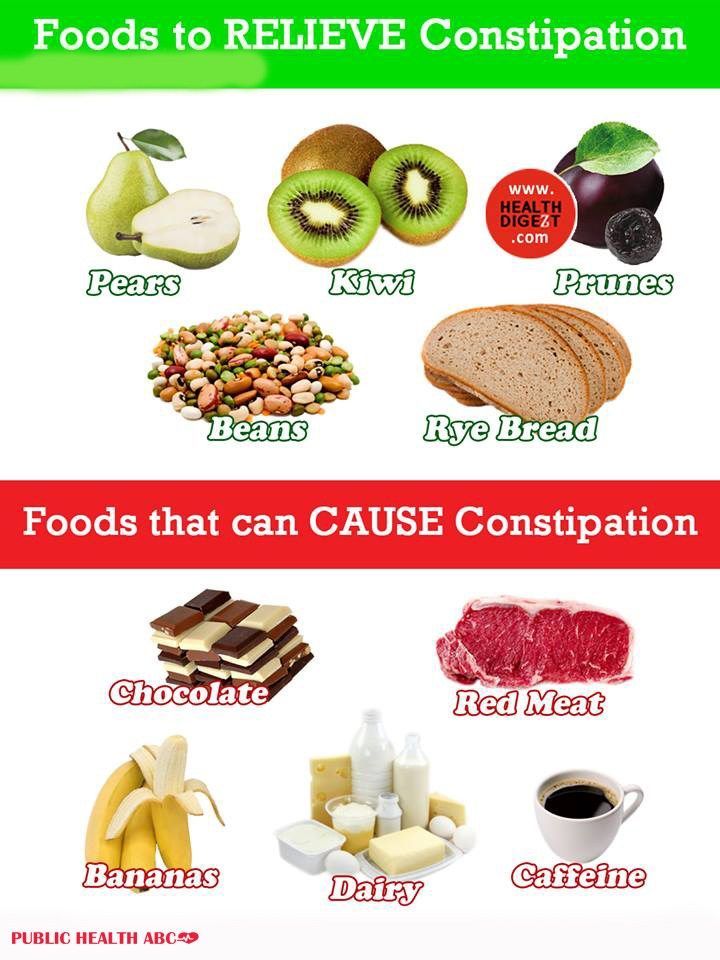
- Making toilet use a regular part of a child's daily routine will help develop a normal bowel habit.
— Children with autism often like routine. Making toilet seating a part of the daily routine will reduce the risk of child resistance.
- Try using a visual timetable with pictures, one of the items being toilet time.
— If your child is most likely to have a bowel movement at some time of the day, try to schedule toilet seating for that time.
— Morning is the best time for most people, but it may not be suitable for a child who will be rushed to kindergarten or school in the morning.
- For some children, the best time is after coming home from school or kindergarten.
4. Make sure your child is comfortable.
- Choose the toilet seat or potty that is most comfortable for your child.
— Use a child seat for the toilet if the normal seat is too big for the child.
- Use the footrest if the child's feet do not touch the floor.
How to teach a bowel movement in the toilet
1. Make sure your child sits on the toilet for long periods of time 1-2 times each day.
2. Teach your child that "poop goes down the toilet" by emptying dirty diapers or underwear.
3. Try to time your child to sit on the toilet when you think your child is most likely to have a stool.
4. Try to stimulate the gastrocolic reflex before sitting on the toilet. This reflex occurs after eating or drinking and allows the bowel muscles to expel stool after eating. To stimulate this reflex, try to get your child to eat or snack, and drink a warm drink before sitting on the toilet.
5. Watch for possible signs in the child's behavior. If you notice that he wants to use the toilet, then take him there. Signs may include:
- Changes in facial expressions.
- Attempts to go to a quiet part of the house.
- Muscular tension.
Positive reinforcement
- Start with rewards for your child just sitting on the toilet.
- When the child begins to empty his bowels on the toilet, start rewarding him for it.
- Small rewards that the child receives immediately after the desired behavior work best.
- Give rewards less frequently over time.
Try not to use food as a reward. Instead, you can reward your child with:
- Sing your favorite song with your child.
- Hugs, tickling, verbal praise.
- Favorite game with a child.
- Stickers that will allow the child to track their progress.
- Time for your favorite pastime.
- Tokens (in the form of stickers, stars or other items) that can then be exchanged for very large rewards, such as a trip to the cinema or to the park.
Many children with autism have special interests. They can be used when planning rewards. For example, if a child is interested in cars, then as a reward, he can look at car magazines. If a child loves trains, then he can receive stickers with trains as a reward.
Positive rewards lead to the desired changes in behavior much faster than any punishment or criticism.
If the child is dirty
- Say something like "I noticed that you are dirty" or "Please change."
- Help the child to do this as needed.
— Do not scold the child or draw attention to what has happened.
If the child does not want to sit on the toilet
- Try to get the child as close to the toilet as possible when he begins to have a bowel movement. If the child does it in diapers while standing, then try to have him do it while standing in the toilet.
- When the child has defecated in the diaper, throw the contents of the diaper down the toilet in front of the child.
- Teach your child to sit on the toilet with their clothes down. Give your child a toy that can keep him busy for a while.
- Over time, move on to having the child sit on the toilet with the lid up but wearing a diaper.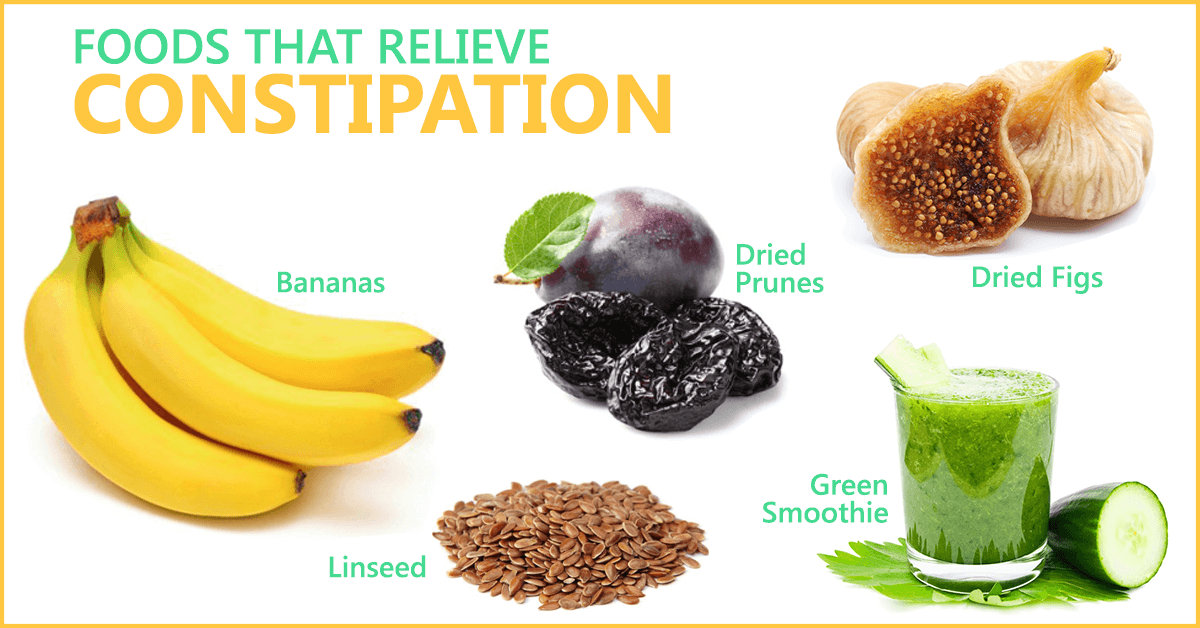
- When the baby is comfortable sitting on the toilet with the lid up, cut a hole in the diaper and enlarge it over time. Try to have the child sit on the toilet in a diaper while having a bowel movement.
Specialist help
Very often it is difficult for a family to change what happens at home. Toilet training can be a very complex behavioral problem. Some families need additional specialist support. Signs that the family needs more help include:
- The child becomes very upset when taken to the toilet.
- Child holds stool longer and longer.
— Constipation progresses in the child.
— Everything connected with the toilet causes tantrums or aggression in the child.
Specialists may include child psychologist, behavioral analyst, pediatrician. Sometimes staff at the child care facility that the child attends can help find the right specialist.
Daily preparations
— May be started immediately if the child does not have acute constipation.
- Taken orally.
- Most effective when taken daily.
Purpose of taking the drug:
- Soft stools and bowel movements every day.
- All stool comes out of the bowels.
Dosage of the drug:
- The initial dose of the drug must be prescribed by a doctor. Sometimes the dosage needs to be varied. Talk to your doctor about this, he will help you change the dosage.
When it is necessary to increase the dosage of the drug:
- Small and hard stools.
- The child does not have a bowel movement every day.
- The child has difficulty emptying the bowels or is in pain.
When to reduce the dosage of the drug:
- Loose stools.
— The child has abdominal pain or cramps.
Duration of drug treatment
— As a rule, the course of treatment lasts at least 6 months.
— After 6 months of daily bowel movements, the doctor may decide to gradually reduce the dosage of the drug.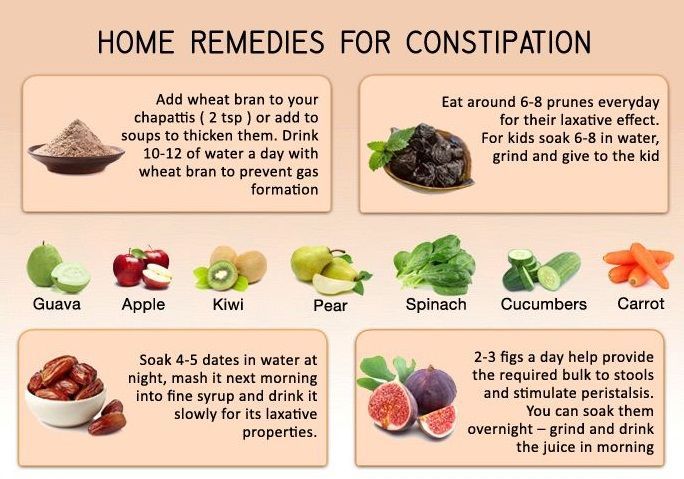
- If you stop taking the drug before the intestines return to normal, then constipation will begin again.
— It is important to make sure that the child has soft stools every day.
How do drugs to treat constipation work?
There are three types of laxatives. They act differently.
1. Osmotic laxatives. They carry water into the stool to keep it soft. Safe and often given to children. Usually taken every day. Suitable for long term use.
Examples: polyethylene glycol without electrolytes, magnesium hydroxide, magnesium citrate, lactulose, sorbitol.
2. Stimulant laxatives. They promote contractions of the intestinal muscles and promote stool in the intestines. As a rule, they are prescribed for a single dose.
Examples: senna, bisacodyl.
3. Lubricating laxatives. Facilitate the passage of stool through the intestines with an oil base.
Examples: liquid paraffin, glycerin suppositories.
Acute constipation medicines
Acute constipation occurs when large masses of hard stool block the intestines. If the doctor thinks that there is a blockage in the intestines, then as a first treatment option, he may prescribe a drug that will "cleanse" the intestines.
Your doctor will work with you to determine the best type of drug. Sometimes drugs that are taken by mouth are best. Sometimes drugs that are injected into the intestines are better suited. This "clearing" usually takes 2-3 days. It is best to spend it on the weekend or on vacation. The child will need to spend 2-3 days near the toilet and use it often.
These drugs can only be prescribed by a doctor. He will tell you how long and how often to take the drug.
Enema procedure
Most cases of constipation in children are treated with oral medications. In some cases, children need a drug that is injected into the rectum. Talk to your doctor about what treatment is best for your child. Do not give your child an enema without talking to the doctor first. Below is information about giving an enema, if needed.
Talk to your doctor about what treatment is best for your child. Do not give your child an enema without talking to the doctor first. Below is information about giving an enema, if needed.
How to prepare a child for an enema
- Explain the procedure to the child in a way that he can understand, perhaps with illustrations.
- Let the child look at and touch the enema bottle.
- Touch the tip of the enema to his hand so he knows what it's like.
- Help your child practice beforehand how to lie down properly during an enema.
Enema Preparation
— Read the enema instructions very carefully. Check out the pictures and instructions in the instructions.
- Make sure the enema is at room temperature.
- Prepare everything you need: an enema bottle; towel on which the child will lie; pillows; music, a favorite toy, or other items to help your child stay calm; wet cleansing wipes.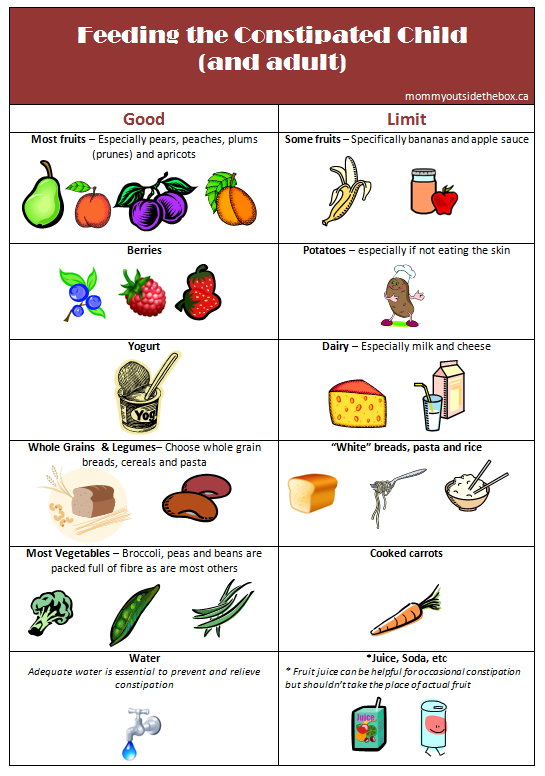
Decide where you will give the enema. Sometimes it's best to put the baby on a blanket or large towel on the bathroom floor next to the toilet.
- Place towels and/or pillows for your child to lie down comfortably.
- Have another person stand at eye level with the child during the procedure - read to him, sing, talk, play music or otherwise distract him and help him lie still.
How to give an enema
1. Wash your hands.
2. Remove the protective cap from the enema tip. The tip should have a lubricant that makes it easier to administer the enema.
3. Help the child lie on his left side with his knees pressed against his chest.
4. Have your helper talk or sing to your child in an effort to soothe and encourage.
5. Hold the enema in one hand. With your other hand, spread your buttocks until you see the anus.
5. Insert the end of the bottle very carefully into the anus. Don't force it in.
6. Position the end of the enema towards the child's back. The contents of the enema should fall on the intestinal wall, and not on the stool.
The contents of the enema should fall on the intestinal wall, and not on the stool.
7. Squeeze the enema until nearly the entire volume has been delivered.
8. If possible, try to have the child lie down for 15-20 minutes. You can hold on to his buttocks to prevent him from pushing out the contents of the enema too soon.
9. If your child wears diapers, put on a diaper.
10. If the child uses the toilet, then put him on the toilet after 15-20 minutes. The liquid should go down the toilet along with the stool.
If at any stage the child becomes very upset, starts crying, screaming, kicking, then it is normal to stop the procedure. Talk to your doctor about other treatments for constipation.
We hope that the information on our website will be useful or interesting for you. You can support people with autism in Russia and contribute to the work of the Foundation by clicking on the "Help" button.
Parenting with children with autism, Nutrition and digestion, Comorbidities
What to do about constipation?
Periodically troubled by constipation.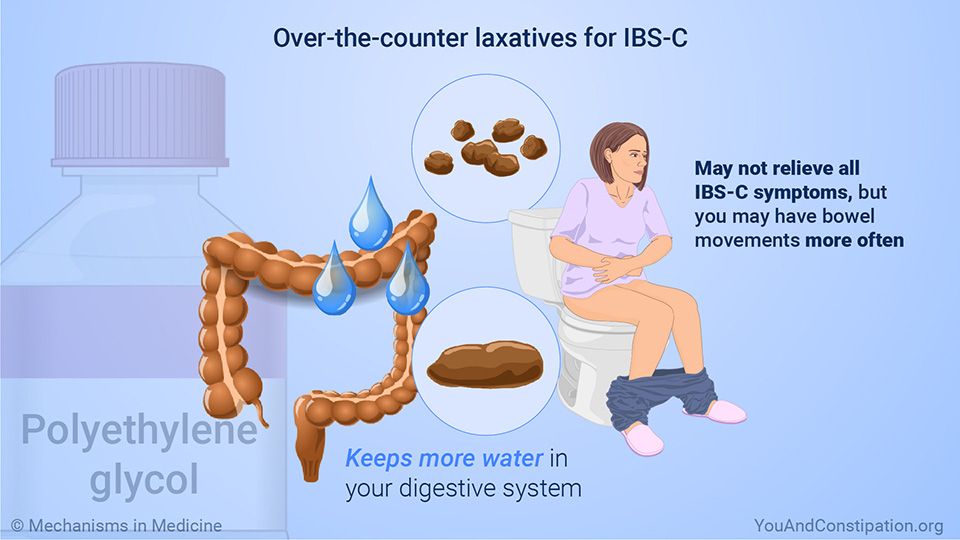 It is difficult to get to the doctor, and it seems that constipation can go away if you eat certain foods. I read that you need to eat beets and prunes, but such a diet does not help me much. Friends advise laxatives, but I heard somewhere that they should not be used often.
It is difficult to get to the doctor, and it seems that constipation can go away if you eat certain foods. I read that you need to eat beets and prunes, but such a diet does not help me much. Friends advise laxatives, but I heard somewhere that they should not be used often.
So what to do and is there a special diet that will get rid of this ailment?
Vika Vishnyakova
nutritionist
Author profile
Constipation is one of the most common digestive complaints among people in Western countries and in Russia. Constipation can be an independent disease, but in most cases it is a consequence of changes in lifestyle or a symptom of other diseases.
There is no universal diet that would guarantee that everyone, without exception, will be free of constipation for the rest of their lives. However, it makes sense to change something in your lifestyle if you want to encounter them as rarely as possible.
See a doctor
Our articles are written with love for evidence-based medicine.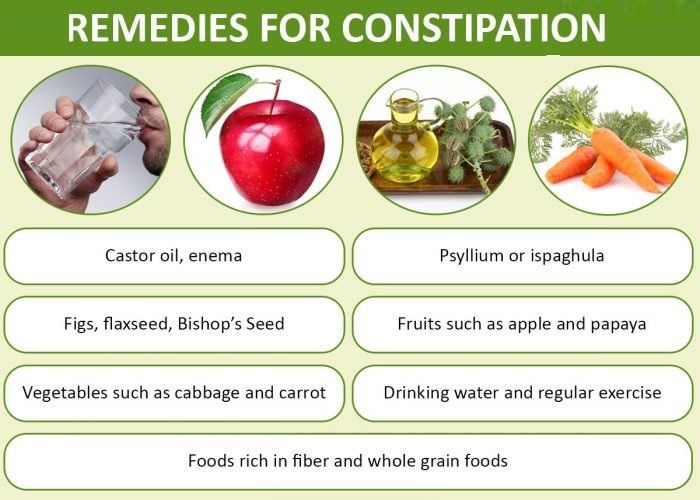 We refer to authoritative sources and go to doctors with a good reputation for comments. But remember: the responsibility for your health lies with you and your doctor. We don't write prescriptions, we make recommendations. Relying on our point of view or not is up to you.
We refer to authoritative sources and go to doctors with a good reputation for comments. But remember: the responsibility for your health lies with you and your doctor. We don't write prescriptions, we make recommendations. Relying on our point of view or not is up to you.
What is constipation
Modern medicine defines constipation as a combination of these symptoms:
- You poop less than three times a week.
- Pooping hurts.
- Stool hard, dry or lumpy.
- After going to the toilet, there is a feeling of incomplete bowel movement.
What is constipation:
American College of Gastroenterology,
National Institute of Diabetes and Digestive and Kidney Diseases USA
Not all symptoms may be present, but one symptom without other complaints is not necessarily constipation.
People empty their bowels in different ways, and only you can judge what is normal for you and what causes concern. The main factor is a change in the usual situation with the chair. Do not be guided by others: some people empty their intestines only three times a week and at the same time are absolutely healthy. But if for many years the norm for you is a daily toilet, then three bowel movements a week is an occasion to take a closer look at the situation.
The main factor is a change in the usual situation with the chair. Do not be guided by others: some people empty their intestines only three times a week and at the same time are absolutely healthy. But if for many years the norm for you is a daily toilet, then three bowel movements a week is an occasion to take a closer look at the situation.
Only a doctor can determine why you are constipated. In most cases, this is due to lifestyle changes or medications. For example, you move less, eat fewer vegetables, take painkillers or iron supplements.
If the stool is disturbed regularly for three months, then constipation is considered chronic. This happens due to a violation of the motility of the colon or coordination of the muscles that are responsible for defecation. That is, the process of signaling the need to poop is disrupted, or the feces move through the intestines too slowly, although there are no anatomical abnormalities.
Sometimes constipation is a symptom of another disease: diabetes, hypothyroidism, colon or rectal cancer.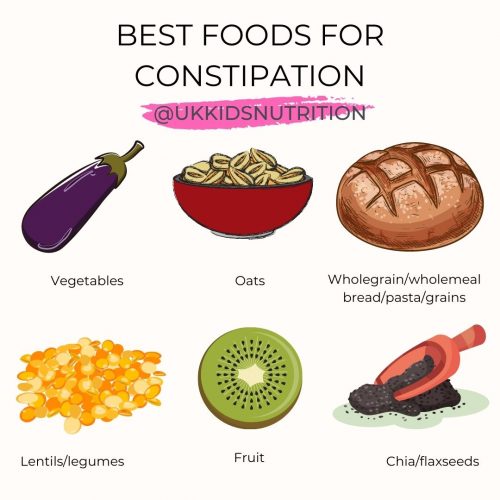 Therefore, even if constipation goes away on its own or after a laxative, but tends to recur, it is better to discuss this with a gastroenterologist or therapist.
Therefore, even if constipation goes away on its own or after a laxative, but tends to recur, it is better to discuss this with a gastroenterologist or therapist.
/diabet/
How to treat diabetes and how much it costs
It also makes sense to see a doctor for constipation if someone in your family has already been diagnosed with rectal or colon cancer.
There are also "red flags" - symptoms, in case of which you need to go to a specialist as soon as possible:
- Constipation is accompanied by fever, and you do not have a cold.
- You are vomiting, you have cramping pains in your stomach, it is swollen, but you can't fart.
- You saw blood in your stool.
- You are rapidly losing weight.
How not to go broke on health
We'll tell you in the "This is the norm" mailing list. Twice a month we send letters on how to check the prescription, choose a quality medicine from a dozen analogues and return the money for treatment
What to do if you are afraid to go to the doctor
If there is a problem, it needs to be solved with a specialist: there is no safe workaround.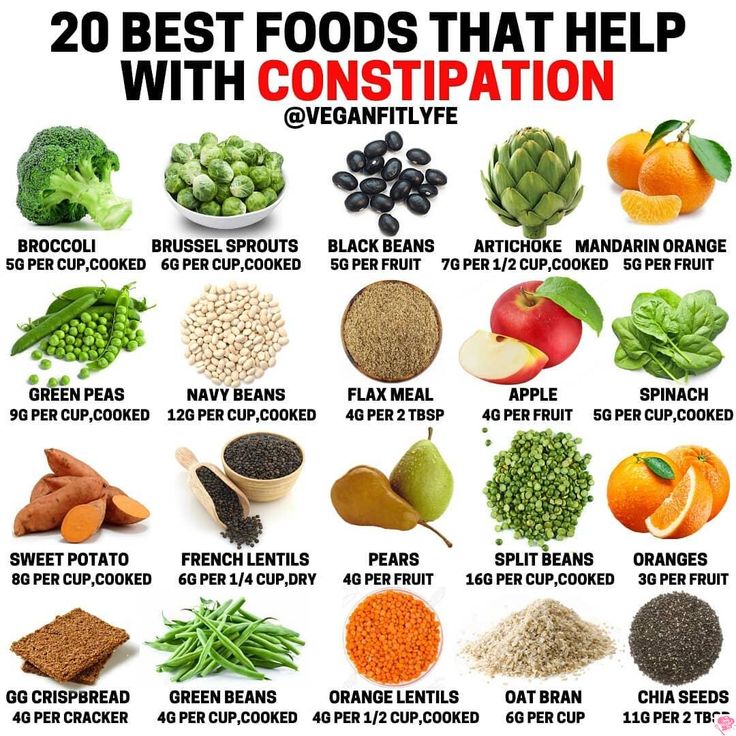 To avoid embarrassment and discomfort, I advise you to look for a modern doctor with the proper level of qualification.
To avoid embarrassment and discomfort, I advise you to look for a modern doctor with the proper level of qualification.
If you go to the OMI clinic, you need to take a voucher to see a general practitioner. He can independently prescribe treatment or give a referral to a gastroenterologist if your situation is ambiguous for him. If you go on a VHI policy or to a private clinic, you can immediately make an appointment with a gastroenterologist: this is a narrower specialist on constipation.
/oms/
How the CHI policy works
Constipation is also dealt with by a proctologist, but he treats only diseases of the rectum. They can also cause constipation, but more often it occurs due to malfunctions in the gastrointestinal tract "upstream". Therefore, when contacting a narrow specialist on your own, it is more logical to start with a consultation with a gastroenterologist.
Often, to confirm the diagnosis of constipation and determine its causes, the doctor will ask about your symptoms and assess your general condition. Pay attention to bloating, pain when feeling it, weakness, weight loss.
Pay attention to bloating, pain when feeling it, weakness, weight loss.
Sometimes additional tests are needed. For example, the doctor may need to feel your rectum with a gloved finger. He may prescribe a fecal occult blood test to rule out certain diseases.
In rare cases, your doctor may recommend an examination with a flexible viewing tube to look at either just the lower part or the entire colon. These procedures are called sigmoidoscopy and colonoscopy. Such methods are needed in cases where the patient's health is at risk, and there are no typical explanations for the reasons for the deterioration.
How constipation is treated
Modern Western and Russian recommendations include increased physical activity, dietary changes, and laxatives as conservative treatment.
How to treat constipation - National Institute of Diabetes and Digestive and Kidney Diseases USA
Constipation - clinical guidelines of the Russian Ministry of Health
Physical activity.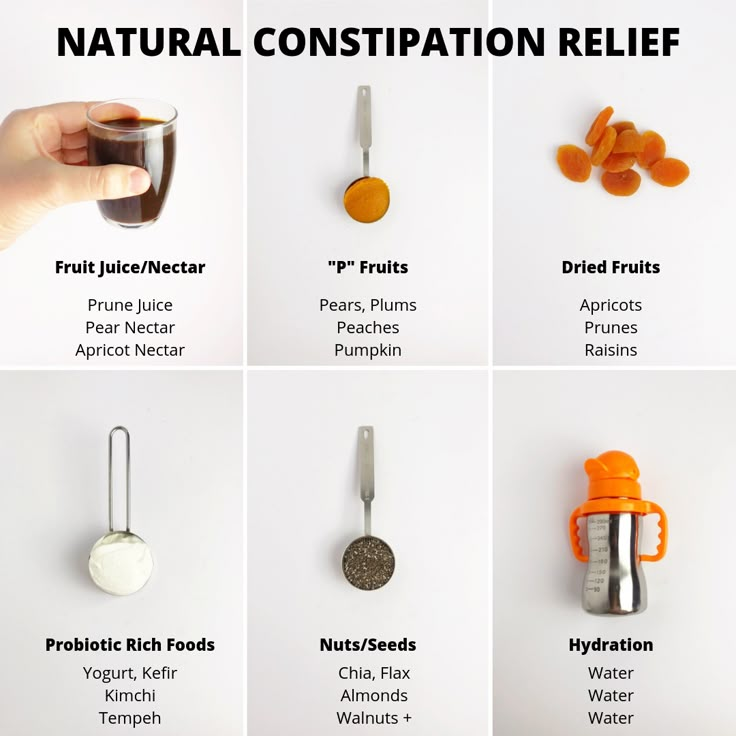 A sedentary lifestyle increases the risk of constipation, which is why scientists recommend moving at least 150 minutes a week. This is not only about sports exercises, but also about ordinary actions: to get to the car, go for coffee, wash the floor or do yoga. Five walks a week for half an hour - and the norm is fulfilled. It doesn't look so menacing.
A sedentary lifestyle increases the risk of constipation, which is why scientists recommend moving at least 150 minutes a week. This is not only about sports exercises, but also about ordinary actions: to get to the car, go for coffee, wash the floor or do yoga. Five walks a week for half an hour - and the norm is fulfilled. It doesn't look so menacing.
Change in diet. Doctors recommend that people with constipation increase the amount of fluid and fiber in their diet. Fiber is the fibers of plant foods, they retain water in the intestines and make its contents soft and voluminous. Such a mass is easier to get out. And if there is little fiber in the diet, then water from the intestines is more easily absorbed, and the feces become more solid and dry - its movement slows down.
What to Eat and Drink for Constipation - National Institute of Diabetes and Digestive and Kidney Diseases USA
Vegetables, fruits, wholemeal, wholemeal, and second grade breads, whole grains, and legumes are excellent sources of fiber. The norm for fiber for an adult is 25-31 grams per day.
The norm for fiber for an adult is 25-31 grams per day.
How much fiber is in different foods
| Item | Estimated fiber content |
|---|---|
| Beans, cooked, 4 tbsp. spoons | 6 g |
| Large potato with skin | 5 g |
| Prunes, 10 pcs. | 5 g |
| Apple | 4 g |
| Medium Kiwi | 2.4 g |
| Banana | 2.4 g |
| Small orange | 2.4 g |
| Tomato | 2 g |
| A piece of rye bread | 2 g |
| pasta portion | 1 g |
Beans, cooked, 4 tbsp. spoons
6 g
Large potato with skin
5 g
Prunes, 10 pcs.
5 g
Apple
4 g
Middle Kiwi
2.4 g
Banana
2.4 g
Small orange
2. 4 g
4 g
tomato
g
SUBS rye bread
2 g
Pasta portion
1 g
In order for fiber to have something to hold on to, liquid must enter the body from outside. It does not have to be pure water - other drinks and soups are also considered.
There is no special food that can eliminate constipation. However, in order not to aggravate the situation, it is better to reduce the proportion of foods that are low in fiber in the diet:
- Chips, snacks, hot dogs.
- Fast food products: noodles, instant porridges and other dishes in which you just need to pour hot water to bring to readiness.
- Meat.
- Frozen ready meals: dumplings, chebureks, donuts, pizza, etc.
/healthy-food/
How much does a healthy meal cost for a family of four
Laxatives can help relieve current constipation if you do not change your lifestyle, then constipation can repeat again and again.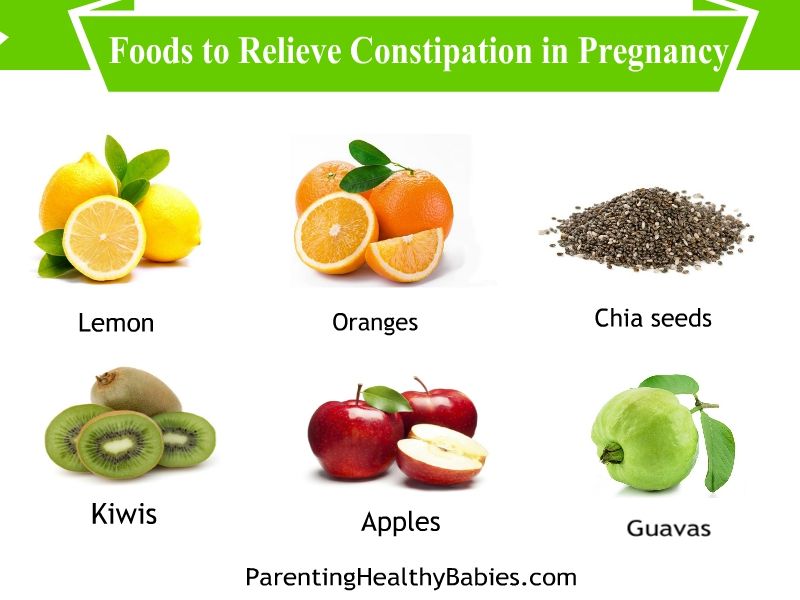
In the Russian clinical guidelines for the treatment of constipation, preparations with active ingredients such as macrogol (polyethylene glycol), lactulose and lactitol are in the first place. They help soften the intestinal contents and increase its volume. Sold in pharmacies under various names without a prescription, many cost around 300 R.
Lactulose, macrogol, lactitol preparations
If these preparations do not solve the problem of constipation, the doctor may prescribe stimulant laxatives with bisacodyl, sodium picosulfate or anthraquinones. They increase intestinal peristalsis by stimulating the nerve endings of its mucous membrane. However, they have serious side effects. For example, they can cause not normal bowel movements, but diarrhea with cramping abdominal pain and flatulence, they can disrupt the balance of electrolytes in the body, and also cause an addictive effect. Therefore, assigning them to yourself is a dangerous occupation.
Dietary supplements with a laxative effect are not medicines.








